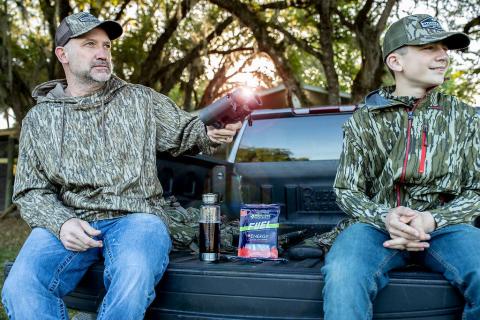Dana Rogers
The “more the better,” or perhaps more aptly we’d like “more with higher quality” when it comes to cover, especially that all-important “edge cover.”
That isn’t just for whitetails but many different species. Are you interested in increasing deer populations where you hunt? Deer populations rise and fall, and today, it seems we’re on the downward trend throughout parts of the country. If you’re in an area where the whitetails need a little help, or you simply want to increase the quality of the ground you hunt, working on edge habitat can be a real boon for your property, the whitetails in the area, and the numerous other species of wildlife that call it home.
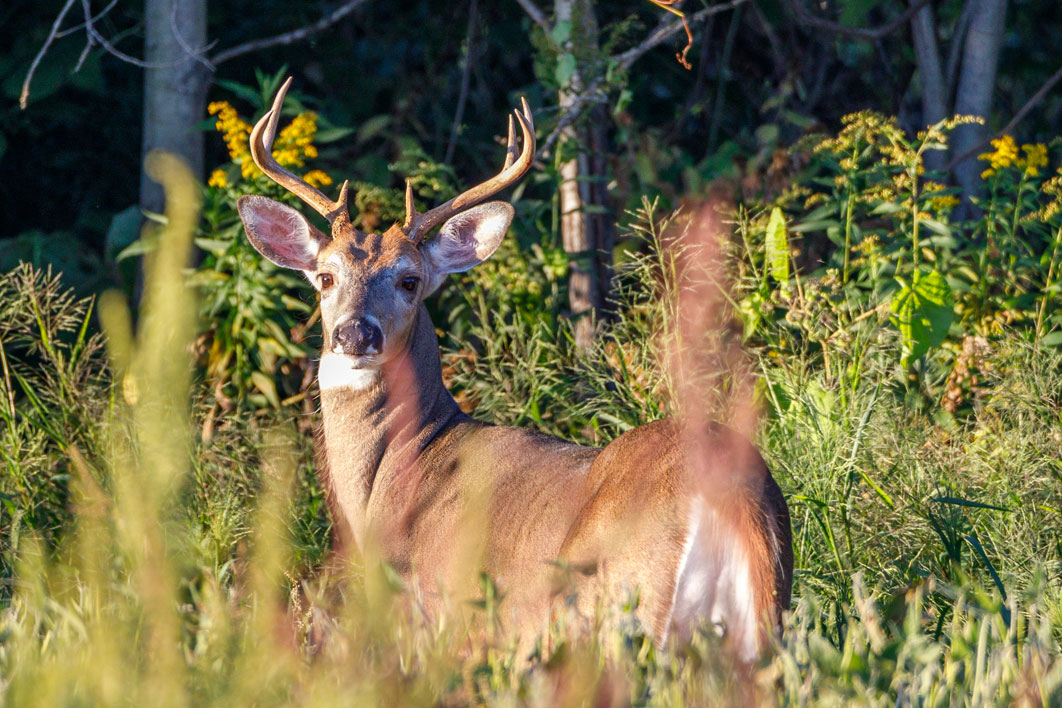
Take a look at your fields. Do they end abruptly next to a line of tall trees? Our family property did and it wasn’t good, for wildlife that is. The best habitat contains soft edges, typically a line of thick, brushy shrubs, woody plants, vines, and possibly tall grasses between the shorter cover in the fields and the mature forest. Soft edges provide a fantastic selection of food and abundant cover to all sorts of birds and mammals. I try to achieve a soft edge 10 to 20 yards wide, with shorter plants in the front and taller ones against the mature tree line.
Before we get into the “how-to” of edge feathering and ecotones, I think it’s always important to think about why we’d want to make a change. Think about the “why” and have an understanding as to how edge feathering can help you achieve greater habitat, wildlife, and hunting goals. With clean fields and an abrupt meeting of mature “park-like” timber stands, you don’t have much cover. Food plots can provide food, and some timber can provide some cover, but if those areas don’t have thick areas from one to six feet above ground level, they are lacking.
Early successional edges also provide great forage in the way of browse and forbs. Weedy field edges and taller plantings also provide screening cover from the eyes of “two-legged” as well as “four-legged predators.” Those are some basic whys: more food, cover, and sanctuary.
To decide how to go about the project and which choices we’ll use to accomplish it, we need a strategy. The first step starts with proper planning. While edge feathering can provide abundant habitat, it can also help you strategically. Edge feathering can be most effective when used within proximity of a food source. Utilizing edge feathering in this way can help you dictate where the game will enter and exit these areas. Installing edge feathering next to areas such as bedding or loafing/roosting areas or near tall vegetation such as warm-season grasses can be extremely beneficial.
200 years ago, wildfires ran across the country. These disturbances provided shrubby cover, which would serve as transition areas between open fields and large stands of timber. These areas were crucially important for many species. These shrubby transition areas provide a source of forage and cover and were critical to many species and offered a source of safety and protection from predators.
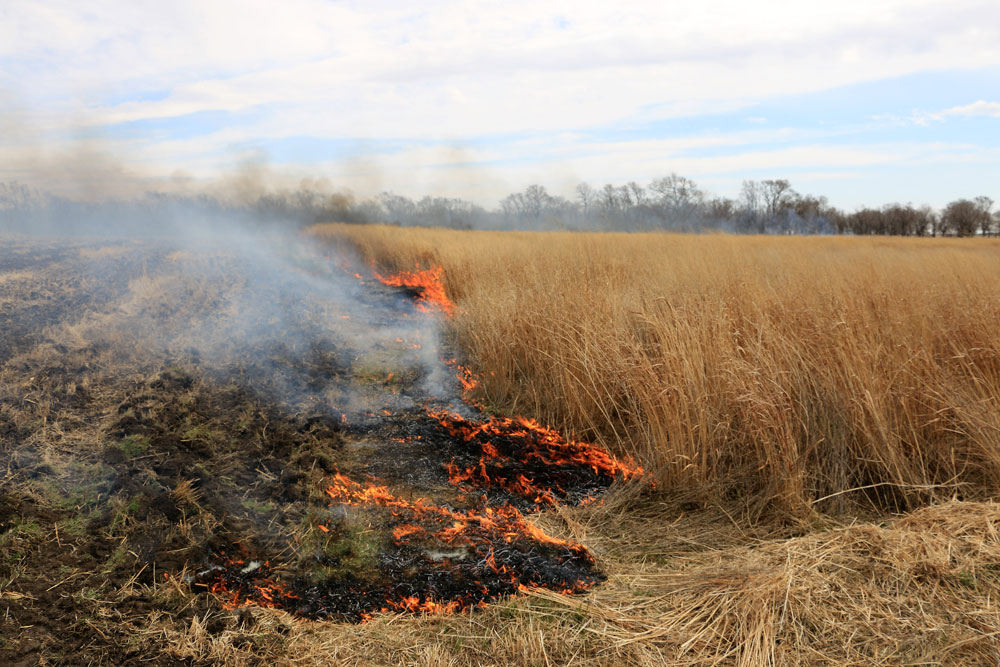
Today, these transition areas of shrubby cover are few once we removed the disturbance of fire from the landscape. Farmers needed to use every bit of ground they could to stay in business and today; we see mostly “sharp” transitions from open fields to woodlots. The good news is, through edge feathering, these areas can be set back easily and they will start providing habitat and forage almost immediately.
The transition zone of vegetation between forests or woodlands and adjacent crop fields or pastures can provide valuable habitat for white-tailed deer. Edges can be improved by encouraging a gradual transition of plant types between the forest and field with a technique called edge feathering or by establishing a field border.
We all know that a huge component of deer management is creating, having, and maintaining good habitats. Although gamekeepers who manage for deer want to have good habitat for the animals in an area, the options at our disposal and which choices we should make for improvements are often tough to decide upon.
The transition zone of vegetation between forests or woodlands and adjacent crop fields or grasslands are absolutely edges. These edges where multiple habitats come together provide valuable habitat for deer. If these areas are simply an abrupt change from timber to field opening the habitat can be limited. Edges can be improved by encouraging a gradual transition of plant types between the trees and field with many of the techniques we will discuss below.
Simply letting the sunlight and Mother Nature work together can create some edge cover, but what are other ways we can help? By planting screening cover, using prescribed fire, hinge cutting, spraying selective and non-selective herbicides, disking, mowing, and even creating brush piles, and your edge acreage can improve drastically in both size and quality. Each of these edge feathering techniques can be used to promote the growth of soft mast-producing trees, shrubs, and vines that whitetails use for both food and cover.
More edge equals MORE wildlife. Habitat is made up of a variety of plant communities, such as woodlands mixed with pastures or grasslands, riparian areas, and agriculture fields. No matter the types of plant communities, white-tailed deer are always attracted to the edges.
It seems hunters inherently know that whitetails seek edges. We seek them too, and so do many critters. The main difference is that deer are herbivores searching for the most nutrient-rich foods they can find. We, on the other hand, are predators looking for our quarry. Deer are attracted to edges because of the plant diversity. Some plants are found there to provide more value in the spring, some more in the summer, fall, or winter. The meeting of two different plant communities provides more potential food diversity than any single plant community. We can create and/or enhance edges for deer so they may forage on a variety of spring forbs, which are extremely palatable and high in protein. Those forbs will be gone when it gets hot, but the deer will be back because other plants found along that edge will be of value soon.
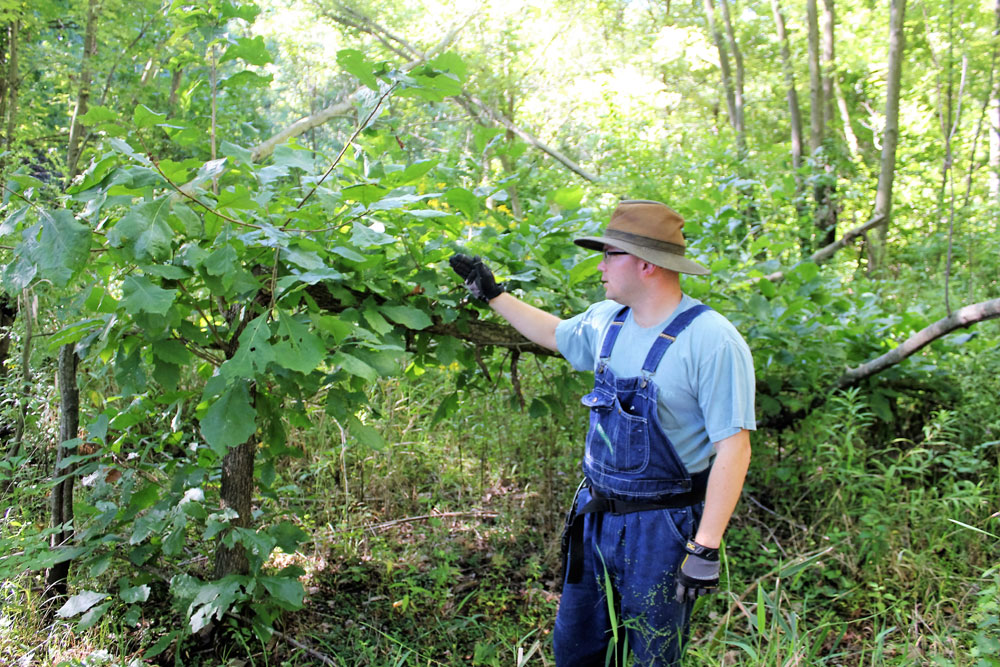
Hinge and Select Cutting Trees
One of the simplest ways to create an edge habitat is to cut the mature trees where the forest meets the field. Doing so allows sunlight to reach the ground, which encourages an entirely new plant community. Native shrubs, vines, and woody plants will spring up to create fantastic edge habitat. You don’t even have to remove the fallen trees; in fact, with “hinge-cutting” that’s the whole idea. You leave the top connected to the roots so it continues to grow. It creates new cover that will eventually turn into dense brush piles.
Thinning or hinging trees along the edge of a timber tract or roads or fields can also create transition zones between different habitat types. Deer and other wildlife love these areas because they often provide a diversity of high-quality foods.
Trees more than 12 to 15 feet high that are along the field can be dropped if they don’t hold food, timber, or stand site value. You can pile them up, or hinge cut them if they are the right diameter (not too small or large). If you want to ensure a stump kill I would suggest spraying, with an approved herbicide to prolong the benefits. The overall objective of edge feathering is to remove the canopy cover and have sunlight reach the bare soil. This will initiate the growth of the shrubby cover, forbs, and woody browse. While it may look like a mess, it provides immediate habitat and browse.
Most people who install edge feathering choose to do so with a chainsaw. Remember to wear proper safety gear such as gloves, ear protection, and eye protection. Keep your sharpener, oil, and gas handy as you will need them on larger projects. Hinge-cutting is all the rage these days and it has some merit. I have just a very few species of mature trees so most of my hinge cut options are elm, hackberry, and ash. I like to hinge about 2 feet off the ground and keep as much of the base intact as possible, bending, pushing, or pulling the top down. Try to do several in one spot to create a cluster with many falling together. This provides lots of great browse as well as low cover to block wind, and create thermal cover and bedding areas.
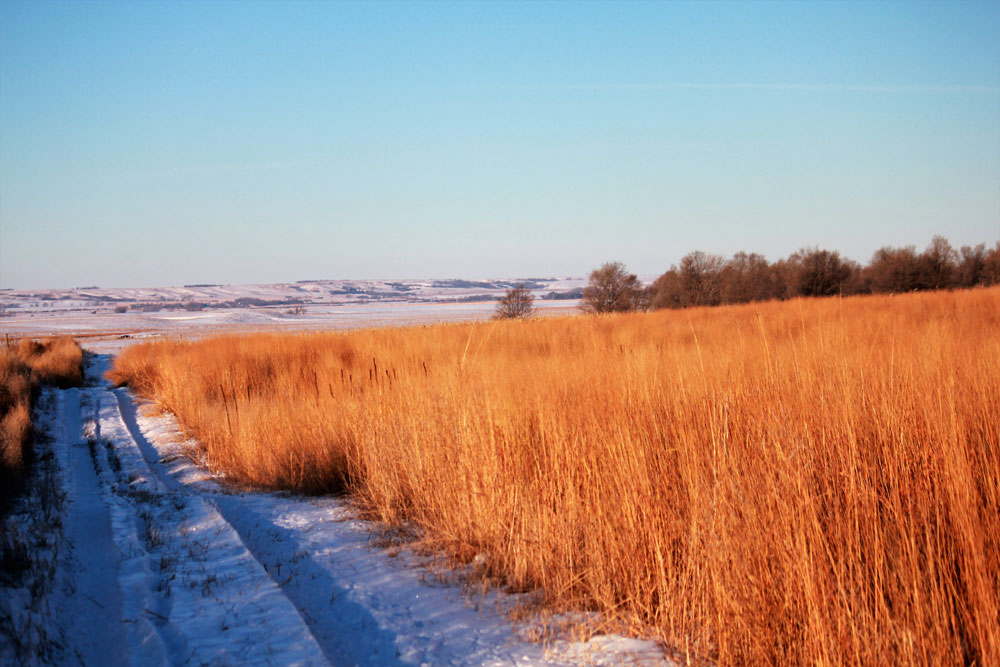
Prescribed Fire
Prescribed fire is a management practice used to set back plant succession and control undesirable woody sprouts. Fire can be used to set back succession within old fields, sloughs, and woodlands to enhance conditions for wildlife. Burning consumes the leaf litter layer in the forest, which in turn protects the stand from wildfire, stimulates the seed bank, and adds nutrients to the soil. Burn results are greatly influenced by the amount of light able to penetrate the canopy and reach the forest floor. Low-intensity prescribed fires can be used on the south and west-facing slopes to improve deer habitat by stimulating new woody and herbaceous vegetation.
Conducting prescribed burns during the dormant season in the late winter is what I prefer. It allows the cover to be burned after most of the severe winter weather is gone but before most of the beneficial new growth takes place. In our area of the northern plains, this is typical during March and April.
Compared to other techniques to increase forage, prescribed fire is far less expensive and much more efficient. Before conducting a prescribed fire, be sure to get a burn plan from a certified conservationist. These plans typically include a plan map, burn objectives, areas of concern, and fire personnel to call in case of an emergency. Prescribed fire classes are also offered to landowners interested in improving their knowledge of fire as a management tool and increasing their comfort level using it.
I have conducted a few prescribed burns on native warm-season grasses on our farm and other properties and the results are startling. The dead leaf and old grass duff is removed and once the rain and sunlight springs new life into the soil, a flush of new forbs and more new warm-season grasses come back the habitat is rejuvenated and the results are amazing.
Kill the Grass
If the field or timber edge contains an abundance of cool-season grass, you should give it a shot of herbicide. Brome, Johnson grass, and Fescue provide very little benefit to wildlife. Treat your field edges with a selective herbicide like sethoxydim or clethodim. Both kill grass, but they don’t harm broadleaf plants, shrubs, and trees. I started with a non-selective such as glyphosate years ago and that worked just fine too for my initial step. If you wait until the late fall, beneficial grasses like broom sedge will be dormant.
Planting Native Grass and Shrubs
Five years ago I transitioned some old fields and pastures to a NWSG mix of Big Blue, Indian Grass, and Switchgrass. It has provided us a lot of great thermal winter cover, screening cover of an average of 6’ and the upland game thrives with security and nesting cover.
Shrubs like elderberry provide excellent cover and food for a variety of wildlife. Smaller trees like crabapple, serviceberry, and other fruit-bearing trees are great choices, too. Many state departments sell bare-root shrub seedlings at a very reasonable cost. A variety of native plants will fill in the border, but if you want to speed up the process, don’t hesitate to plant blackberry and raspberry. You can even transplant them from other parts of your property.
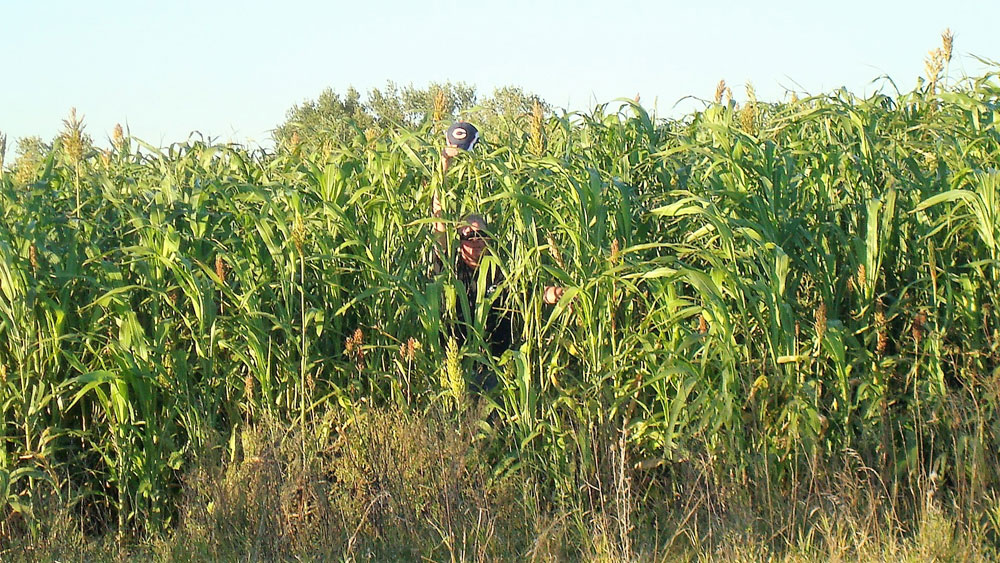
Layering Screening Cover Around Edges
I mowed my field edges the first year and would probably recommend against that in the future. There are better ways with fire and herbicide treatments. If you must mow your fields, consider leaving a wide strip of unmowed ground between the tall trees and the field. It can take several years for good plants like blackberries and native shrubs to grow tall and thick enough to provide good habitat, but they will eventually out-compete unwanted plants like cool-season grasses. By allowing succession through fire and herbicides and by mixing in plantings of shrubs, conifers, and warm-season grasses you give wildlife a wonderful edge ecotone they can thrive in.
Keep Them Short
Cutting trees along the edge of a field is a great technique for creating soft edges, but there’s a good chance new trees will take their place. Seeds and even stump sprouts will flourish with the additional sunlight. That’s okay, at least for a while. The idea is to allow the dense cover to take over. Thick, young saplings and the vines and shrubs that grow are great feeding and nesting areas for upland birds and rabbits.
Regardless of if you are talking about providing habitat through management or food plots, or perhaps just simply looking to increase your arsenal of hunting, the return on investment is always something to keep in mind. Most of us need our dollar to stretch as far as possible, and this habitat improvement initiative can give you a lot of “bang for your buck.” Edge feathering is a very cost-effective management practice that can provide a wide range of habitats for many different wildlife species. It’s a very simple practice that anyone with a chainsaw and a little bit of herbicide can complete in just a few hours.
Building Brush Piles & Beds
While it may seem like a lot of work upfront, installing some edge feathering where possible can greatly increase the habitat in your area almost immediately and will keep working for you for many years to come! Thinning or cutting trees near the edge of a woodland tract or adjacent to logging roads or right of ways can also create transition zones between habitat types. Each of these edge feathering techniques can be used to promote the growth of soft mast-producing trees, shrubs, and vines that deer use for food and cover.
Timber stand edges are often the first thought on this topic, but you can also add them to food plot edges to provide screening, browse, and funneling effects. Planting NWSG, shrubs, and even annuals such as WhistleBack blend, Sudan grass, Egyptian wheat, or the like will quickly provide an edge to your green food plots. This creates excellent cover and habitat. It can also be used to help block off multiple runways entering a field and to create screening at the same time.
Finally, if you have an excess of dead timber you can just create a giant brush pile of cover and browse. Deer will browse on the green tops or small tips. Constructing brush piles that block wind and screen prying eyes and predators also provides great bedding cover for small game and sanctuary from predators. All of these options can be done with minimal expense, particularly with a chainsaw, prescribed fire, and herbicide work. Do some research, make a plan, and get to work!















